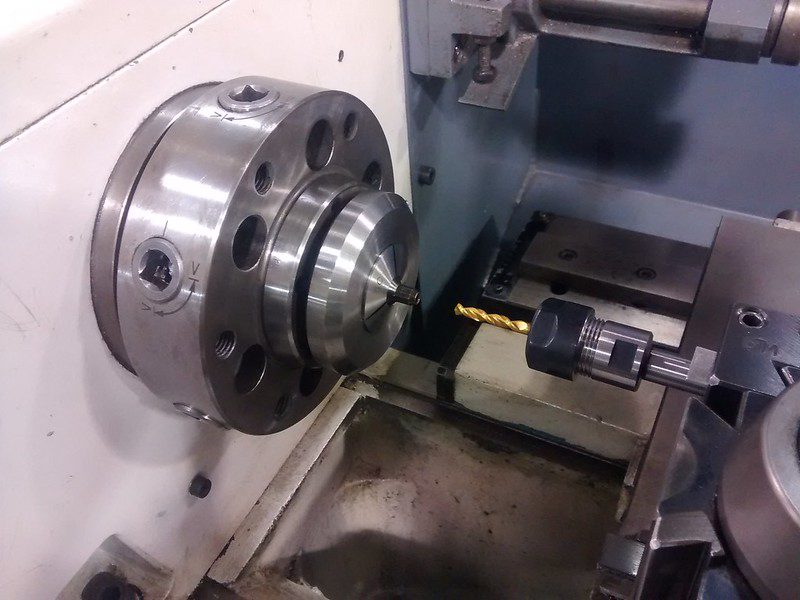Spindle in a lathe: While it might not be the most riveting topic, there’s no component more critical to a lathe’s operation than its spindle. So, what exactly is the lathe spindle? It’s the piece that links the lathe’s motor axle to the headstock. This is the rotating element of the lathe. Without a spindle that spins, you wouldn’t really have a lathe. Typically made of metal, the spindle may appear as a plate or disc. Some designs feature a shaft protruding over the lathe’s bed, while others align perfectly with the headstock. This spinning component of the spindle extends its rotation through the headstock to the axle. Essentially, the spindle acts as a connector – transferring the rotational motion from the axle to the workpiece and onto the tailstock, enabling the lathe to perform its signature cutting actions.
Understanding Lathes
Lathes, often referred to as turning machines, stand among the most ancient of machine tools. In contrast to milling machines where the cutter moves, in lathes, it’s the workpiece that rotates. This unique design permits intricate cuts, such as threading on a shaft. Typically, lathes use stationary cutting tools, but there are cases where the cutter might be fixed to the spindle, mimicking the motion of a regular drill.
Lathes come in various designs and dimensions, ranging from large-scale CNC machinery to compact mini lathes. These machines are popular for tasks like woodturning and metal shaping. A standard lathe consists of an engine compartment, a headstock, a connecting spindle or motor spindle, the bed’s length, and the tailstock at the end. Notably, the tailstock often possesses its own spindle, letting a workpiece be placed between two centers. This design ensures stability while still maintaining a smooth rotation.
Regarding spindle types: There are different machining spindles, but they largely fall into two categories: direct-drive and belt-driven. The belt-driven variants, often seen in older lathes, have a longer start-up and wind-down time. This becomes crucial when dealing with mass production, especially for smaller parts with brief machining durations. In some instances, the time taken to reach optimal speed can almost rival the machining time.
On the other hand, direct-drive spindles, the norm in contemporary lathes, achieve their maximum speeds nearly twice as fast as their belt-driven counterparts. This makes them more suitable for bulk production tasks.
Factors to Contemplate When Evaluating Lathe Spindles
Looking to replace the spindle on your lathe? Recognize that lathes typically come with a specified spindle size; they’re not universally interchangeable. Though you might have the option to modify connections, introduce an improved chuck, or secure an adapter for a different spindle interface, it’s essential to factor in several considerations:
- Size: Generally, a larger lathe demands a larger spindle. Especially for metal lathes, it’s crucial to have robust, fortified spindles to support the weight of hefty metal pieces. If you’re considering a spindle replacement or upgrade, prioritize quality to ensure it withstands regular wear and tear.
- Connection Type: While MT (machine taper) is the prevalent connection standard, other types do exist. Moreover, there’s a diversity among tapers themselves, like the standard machine tapers and morse tapers. The latter doesn’t have the drawbar’s added security. Opt for a taper that aligns best with your workflow or other workshop tools.
- Speed: Closely tied to size, it’s crucial to consider the speed capacities of turning machines. While smaller lathes might necessitate high-speed spindles, their larger counterparts might focus more on delivering high torque rather than sheer speed.
Note that these insights aren’t exclusive to metal lathes. Those operating wood lathes must also pay heed to their spindle care. Typically, woodworking lathes won’t demand the robustness associated with top-tier CNC lathes.
Taking care of the spindle
Spindles are the heart of your lathe machine. Mistreat them, and you may face a malfunctioning lathe due to spindle breakdown.
Balance – Typically, spindles come equipped with set screws to ensure they remain balanced and rotate seamlessly. Always check and adjust your spindle during a replacement or upgrade.
Lubrication – Beyond merely serving as a junction point, spindles consist of precision-engineered bearings and intricate components, ensuring the entire mechanism operates smoothly. The majority of spindle breakdowns aren’t a result of excessive load, but rather stem from inadequate maintenance and insufficient lubrication or coolant. This negligence can lead to the locking and failure of spindle bearings.
For replacements or upgrades, opt for trusted manufacturers. Instead of outright replacing old spindles, consider repairing them. Turn to a dependable repair service to get your lathe operational swiftly.
